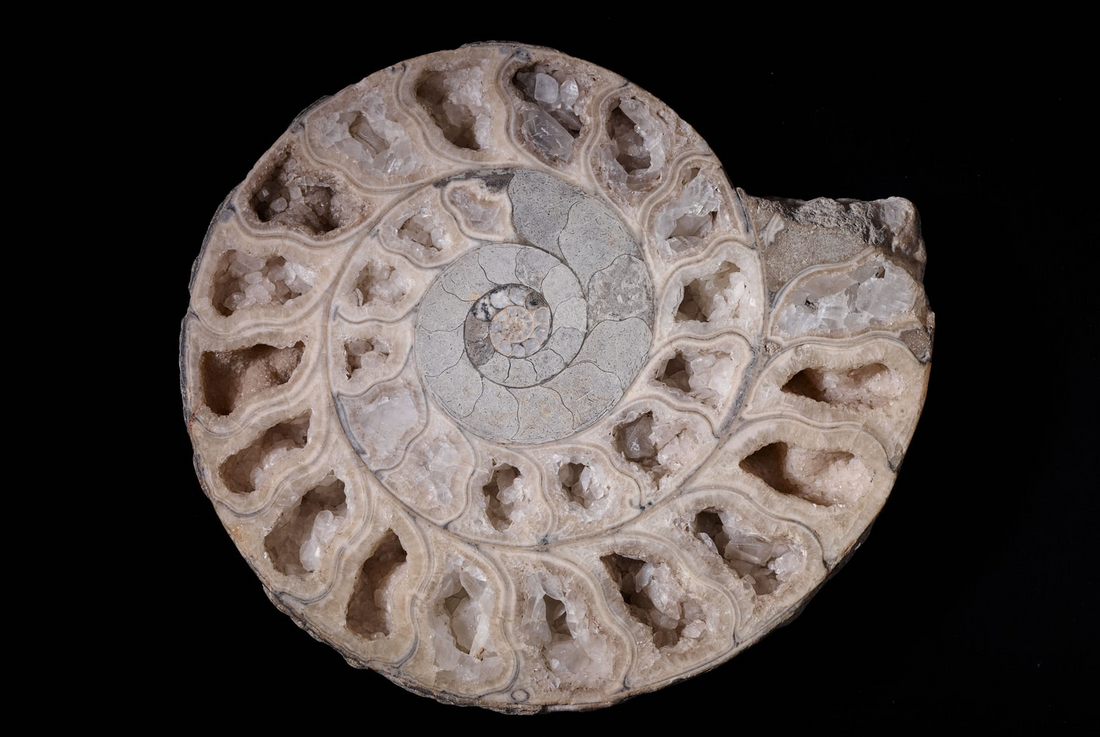A Window to the Past

Did you know that we have a little cabinet of curiosities in the shop full of seashells and fossils? Fossils are our window to the past, they allow us to see the beauty of the world that used to be. We have for long been captivated by their charm - our ancestors from hundreds of thousands years ago used fossilised bones to make axes, and we found some ancient fossil necklaces too. Fossils explain the prominence of dragons and giants in the ancient mythologies - animal fossils were believed to be body parts of mythical creatures. The skull of ancient elephants, with an empty space where the trunk was attached, might have created myths about cyclops, and mammoth bones were believed to belong to giant humans.
Dinosaurs are not the only fossils we find. Practically anything can become fossilised, from plants to meteorites. The process they undergo is the deciding factor. Fossilisation is very rare and occurs when an object is buried in sediment that then begins to form a rock around it. With time, the objects dissolve in the water seeping through the rock. Minerals in the water replace the object, leaving a rock replica. Size-wise, fossils can be as small as a bacteria or as large as a 15-ton dinosaur.
Fossils help us unravel mysteries from the past and determine what the world looked like, they help us understand the evolution of life too. Did you know that there was a species of parrots that was 3 feet tall? And that the feathered dinosaur Sinosauropteryx had a red and white tail? And that some crocodile relatives were herbivores? How amazing is that?! Fossils of marine animals have been found in The Himalayas which suggests that the mountains were once an ocean bed before they rose due to landforms colliding.
Even today, the fossil bones, mistaken for “dragon bones”, are used in the traditional Chinese medicine as a cure for various illnesses and as an aphrodisiac. The fossils are also often used as talismans. Fossils’ cure for illnesses is almost solely a placebo effect although they can be the source of some essential minerals.
Fossils have also a decorative function. The fossil collection and description began as early as in the 1700s although people didn’t really know what fossils represented before 1800s. Curiously enough, ancient people had a better understanding as they considered fossils to be remains of life from the past while the western scholars interpreted fossils as an attempt by rock to imitate real organisms. You can start your own collection today - come to the shop and browse our cabinet of curiosities!
